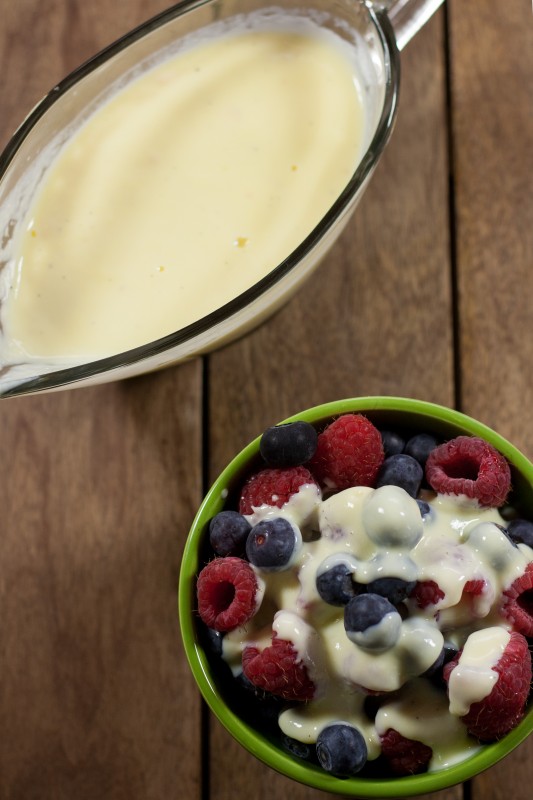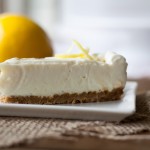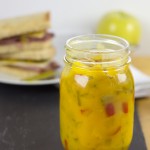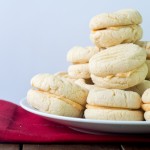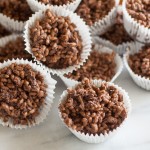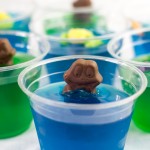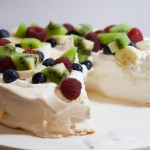Calling all Doctor Who fans! Have you seen the scene where the doctor dips his fish fingers (fish sticks) into custard? Did you ever wonder what that custard tastes like? Try making your own custard and you can find out! However, I would recommend that you do not dip fish fingers into it!
Home-made custard is a wonderful indulgence when you are searching for something creamy and sweet. It is one of the foods that I missed the most when I moved to America. In Australia, I was able to buy custard in a carton similar to a milk carton. I looked everywhere when we moved and was ecstatic when I finally found custard powder (think processed custard!) at Cost Plus World Market. However, it was a pretty expensive habit to indulge.
It took me a long time to discover how easy it was to make my own custard. A few years ago I had the opportunity to visit England with my best friend. We were browsing a bookshop when I picked up a copy of The Great British Book of Baking The pictures drew me in and the recipes have kept me entertained ever since. Custard is one of the things that I learned how to make from this book.
Custard is very different from vanilla pudding. Custard is made from milk and eggs while vanilla pudding typically contains no eggs and is made from milk and cornstarch. Vanilla pudding also typically has a thicker consistency. I love hot custard, so it is quite runny when I use it. Custard can be served hot, at room temperature or cold. It will thicken as it cools, however you should always be able to pour custard.
I use custard on many different foods. My favorite way to serve it is to simply pour it over fruit. It reminds me of the Fresh Seasonal Berries with Sweet Cream which is served at Ruth Chris Steakhouse. (I love that place – maybe my love will take me on a date night soon!) Typically you will find it served with sweet pies or puddings. Over the next few weeks I will post some recipes that taste wonderful with custard.
Some people do not like custard as sweet as this recipe. If you do not like a sweet custard, simply decrease the sugar. My Mum uses only about half the amount of sugar. Two thing to note here: In Australia and England, one tablespoon is 20ml. In America a tablespoon is 15ml. If you are not in America, you will definitely want to decrease the amount of sugar. The other important adjustment is that 2 cups of milk in America is equal to 450ml. If you are not in America, you only need 450ml.
Custard will stay good for about 3 days when it is refrigerated. Good luck keeping it that long though! I made mine yesterday and it has disappeared already.
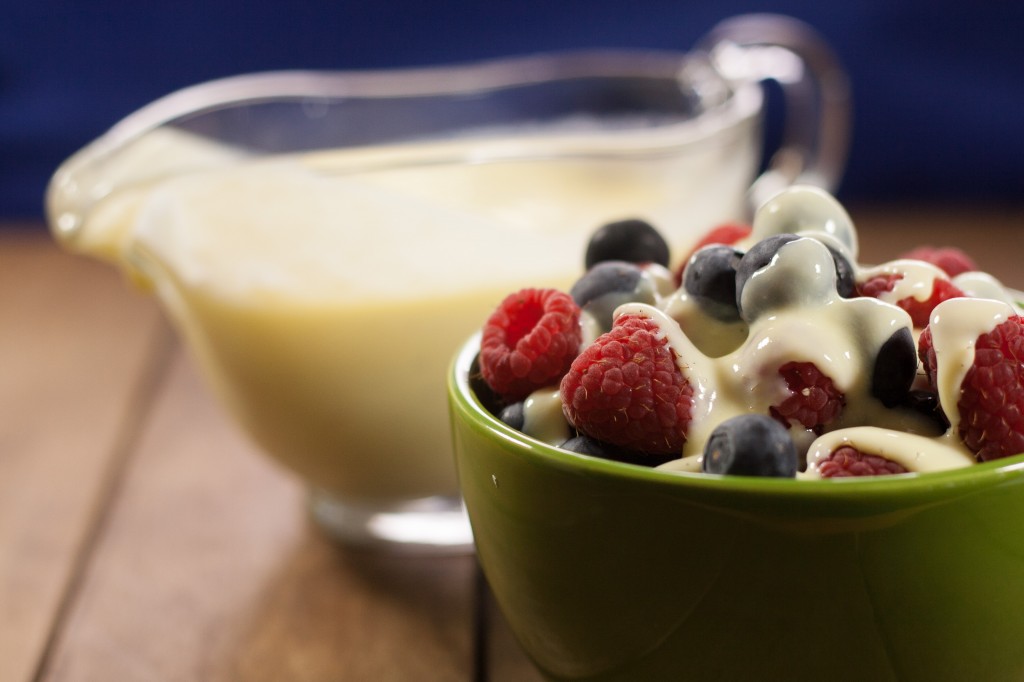
- 2 cups full cream milk
- 1 vanilla pod
- 4 egg yolks
- 3 tablespoons baker's sugar
- Pour the milk into a medium sized saucepan.
- Split the vanilla pod in half, lengthwise, and scrape a few of the vanilla beans into the milk. Add the pod to the milk.
- Bring the milk to a boil over a medium heat, stirring constantly to prevent the milk from sticking to the bottom of the pan.
- Once the milk has boiled, remove the pan from the heat and then cover and leave the milk for 15 minutes. This gives the vanilla a chance to infuse the flavor into the milk.
- Put the eggs and sugar into a medium sized, heatproof, mixing bowl. Briskly mix the eggs and sugar with a spoon for a minute.
- Remove the vanilla pod from the milk. If you wish to reuse the vanilla pod, rinse it well and leave it to dry.
- Slowly pour the milk onto the egg mixture, stirring constantly. At this point, if you have had milk stick to the bottom of your saucepan, quickly rinse the pan and dry thoroughly.
- Pour the mixture back into the saucepan and stir constantly over a medium heat. The custard is ready when the custard begins to thicken and coats the back of your spoon. Do not let the mixture come to a boil.
- Pour the custard into a serving bowl, and serve hot or refrigerate for later use. The custard will thicken more as it cools.
- The sugar content can be decreased for a less sweet custard.


